We decided to take an almost last-minute trip to Brittany for the long weekend. We weren’t the only ones who had the idae of getting away for Easter weekend: When we showed up at the train station yesterday (Friday) morning, there was a message flashing on the monitors that every TGV train in France was fully-booked.
Fortunately in France, even though you’re paying 4x more for a train trip than what an airplane trip would cost (there are no flights to Rennes from Paris - but I just bought train tickets to London which cost 4x more than airline tickets), the train is so much nicer. You don’t have to get to the train station 2-3 hours ahead, no one is weighing your luggage, you’re not strapped into a seat that even Kate Moss would find snug, and there’s a café car you get stroll over to, to get a coffee. Plus when you hit 60, you can get a Carte Senior which gives you discounts, a cap on train fares (which I never seem to get), and a liberal refund policy. It makes getting older worth all the various aches and pains and moisturizers you need to add to your daily routine.
After blissfully sleeping in late, waking up around 9am, to a gorgeously sunny day, we had coffee and toast for breakfast, then headed to the Saturday market in Dol-de-Bretagne. The first thing Romain said was, “Everyone is so calm!”
There wasn’t the usual scrum as there is in Paris, with people darting around trying to get as much done as possible, no matter who is in their way. Here, people saunter and talk to each other, and everyone walks rather than bolts. This is usually when Romain feels the need to say to me, once again, “This is why we need to get a house in the countryside.”
That said, I waited patiently for quite a while at the stand where the fellow sells kouign amann and gâteaux bretons in various flavors; nature (plain), salted butter caramel, and another with a ribbon of raspberry jam running through it. But I was particularly interested in the buckwheat gâteau since I offered a recipe for buckwheat gâteau breton in my book, The Sweet Life in Paris, and a few people were baffled that you could add buckwheat to the classic buckwheat cake, in spite of buckwheat being a very popular ingredient in Brittany.
People in France can be very strict about what goes into what, and what doesn’t. When I went to pastry school the chef instruction refused to put a few drops of lemon juice in the apricot pâtes de fruit mixture because he said, then you’d have to call them apricot-lemon pâtes de fruit. In the U. S. we add vanilla to seemingly everything we bake, but when it’s added in France, “vanilla” is added to the name of the dessert.
Unlike the upscale kouign amann you see in Paris and in cities like New York, Tokyo and London, kouign amann (which means “butter cake” in the Breton language), in the region, the cake isn’t always presented as a tidy little disk, but often baked in a big slab and cut into rectangles. The fellow made sure to tell me to rewarm it before eating it, and when I told him I, too, was a pâtissier, he gave me a discount. So being a senior baker comes with even more advantages.
What I love about the markets in the French countryside are the beautiful vegetables. Yes, there are stands selling blemish-free Golden Delicious apples that all suspiciously the exact same size, kiwifruit from Down Under, and tomatoes when there shouldn’t be, but it’s nice to shop at the producteur stands where they sell what they grow. And I also love seeing the irregularities in fruits and vegetables.
But I may be in the minority when it comes to goofy-looking produce. A farmer once wrote to me, thanking me for showing dirty and dented fruits and vegetables, which she said she had a hard time selling. I will admit that when I have to peel a lot of apples, I tend to grab all the bigger ones rather than the tinier ones, even though they’re cuter.
People in Brittany, and in France, adore andouillette, and when I first moved to France I was having dinner with a Belgian friend (I guess they like it too) at a bistro in Paris, and while he was wolfing his andouilette down, I asked him how it was. He said, “It tastes like sh*t,” which in my whole life, I’d never considered that to be a compliment when it comes to food. But Romain once told me peanut butter made him queasy, so at least I don’t have to share my peanut butter with him…and I let him have his andouillette. Well, once in a while.
A local specialty is Gridouille de l’Argoat à l’ancienne, which is a particularly pungent sausage that even our almost-vegetarian friends that we are staying with, enjoy with gusto. There’s a truck that sells it at the market and Romain practically sprinted over to it when he saw it, and I made my way over to our favorite produce and cheese stands.
If you hit the right market, the quality of vegetables in the countryside is really different than Paris. Fortunately we have a lot of small stores in PAris that sell produce from small producers, such as Terroirs d’Avenir, Miyam, and Au Bout du Champ, but at the market here in Dol-de-Bretagne there’s one produce stand that’s particularly excellent and we always buy as much as we can. (I don’t know their name but they’re across from the sheeps’ milk cheese fellow.) If we hadn’t taken the train, I would have loaded the car up with their lovely vegetables.
These “endivettes” were tiny and dirty…and I couldn’t resist them. I know they’re not so appealing to everyone, but I am betting they have a lot of flavor, much more than the giant, perfect spears they sell in the supermarkets.
I also loved all these little onions (below); red, white and yellow, which aren’t for peeling (Whew! In addition to apples, I’m also not a fan of peeling tiny onions) but are for planting.
Then we got in line for the young man who sells sheeps’ milk cheese. We always stop there and buy a lot from him, from little glass pots of very fresh sheeps’ milk yogurt (you return the jars the following week), to fromage blanc (creamy-soft fresh cheese) that he’s mixing with ail des ours (wild garlic), which is in season right now, to make a very delicious spread.
Like the guy cutting gâteaux bretons and kouign amann, this guy is in no hurry to get to the next customer and people wait patiently in line, knowing that when they get to the head of the line, they’re going to take all the time in the world when it’s their turn, like the airplane bathroom. So you just have to wait your turn.
Brittany is also known for butter and as I’ve mentioned here and there, I’ve been taken to task for loving salted butter. Salted butter is the default in Brittany, because traditionally, they eat a lot of butter, so salt was added to preserve it. Nowadays, thanks to refrigeration, the salted butter at the grocery store isn’t older and less-fresh than the unsalted butter, which people used to think. And I like the way it tastes — and like people in Brittany, I sometimes bake with it.
Whatever butter you choose in Brittany, if it’s fermier (from a small producer), it’s undoubtably going to be very good. Even in the region, it’s not cheap; the one above was €4,20 ($4.50) for 250g / 9 ounces, but it’s a justifiable extravagance and since our friends don’t eat meat (except that Gridouille…), we eat good butter.
Before leaving the market, I picked up a few baguettes. These were extra-crunchy and I get a tradition (sourdough) and a grainy baguette.
Spoiler: We ate the entire grainy baguette for lunch, then started on the second one. I was glad I bought two, but I should have leaned into my américain side and bought more than everyone I was with thought that I should buy. I tend to overestimate how much food to buy—always. Which I don’t think is a bad thing. But people do think I buy too much, until we invariably end up eating it. Then they’re happy to have it.
After a stop in a little café around noon, where a few patrons were polishing off what looked like to be their second (at least…) beer of the morning, we each had a much-appreciated café noisette, and headed home.
Unpacking in our friends kitchen, we found ourselves with an overload of greens. Below is about one-quarter of it. It’s vulgar to talk about money in France, but the heads of lettuce and watercress were only €1,20 (around $1.50) each. And the flavor of these greens is really out of this world. It’s easy to forget how good a salad can taste, but when you have extremely fresh lettuce, it’s hard to go back to eating the grocery store stuff. Another reason to move to the countryside, I suppose. (Just don’t tell Romain I said that.)
In addition to butter (and crêpes), Brittany is known for it’s seafood and coquillage (shellfish), which is particularly bountiful, not expensive, and always impeccably fresh.
We got some wonderful huitres plates, flat oysters, for lunch, which are precariously expensive in Paris, and have a milder flavor than other types of oysters, which can be salty and iodée, which I’m not sure how to translate. But I guess one would say they have a more iodine flavor? Low iodine levels may contribute to depression and anxiety in certain people (that’s not medical advice—see your doctor or licensed medical provider for that), but I’m happy to eat oysters whenever I can.
Watercress also makes me happy and Romain made a big salad out of it along with the escarole and other salad fixins our friends had on hand.
For dessert, I sliced up the kouign amann. I sensed some skepticism about the buckwheat gâteau breton, but was relieved that everyone loved it. And I was happy that the fellow at the stand let me choose which exact piece of the kouign amann that I wanted. Naturally I told him to slice the extra-caramelized angle (corner).
For dinner, our friends cooked up the araignée they got, a type of spider crab with a very, very hard shell. We’re going have another good salad, some white asparagus, some of those lovely potatoes, boiled, served with salted butter, and a few rounds of sheeps’ milk cheese. Tomorrow is daylight saving’s time in France so not sure we’ll get to sleep in, or not, but I’m looking forward to lunch…and dinner.




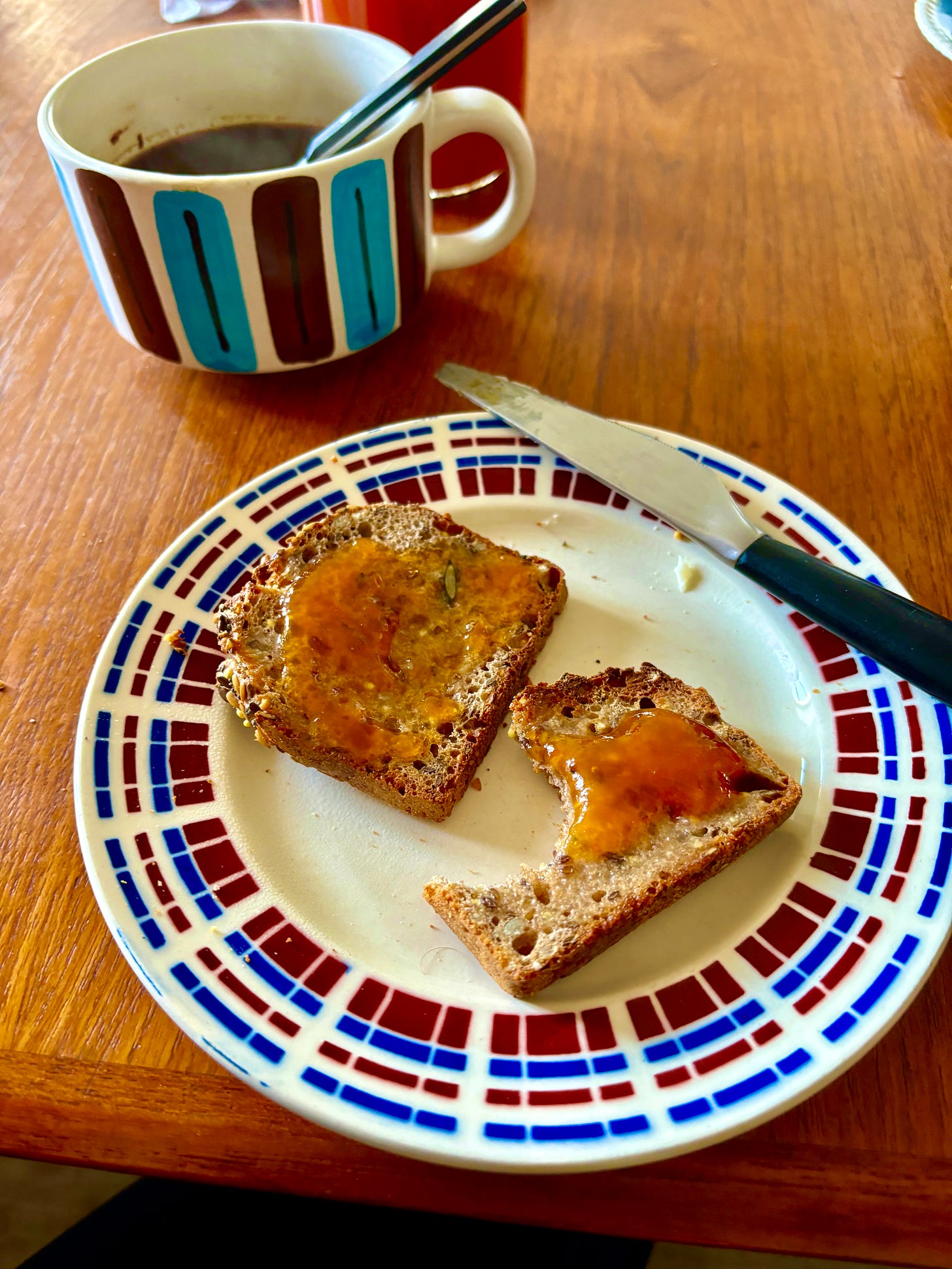



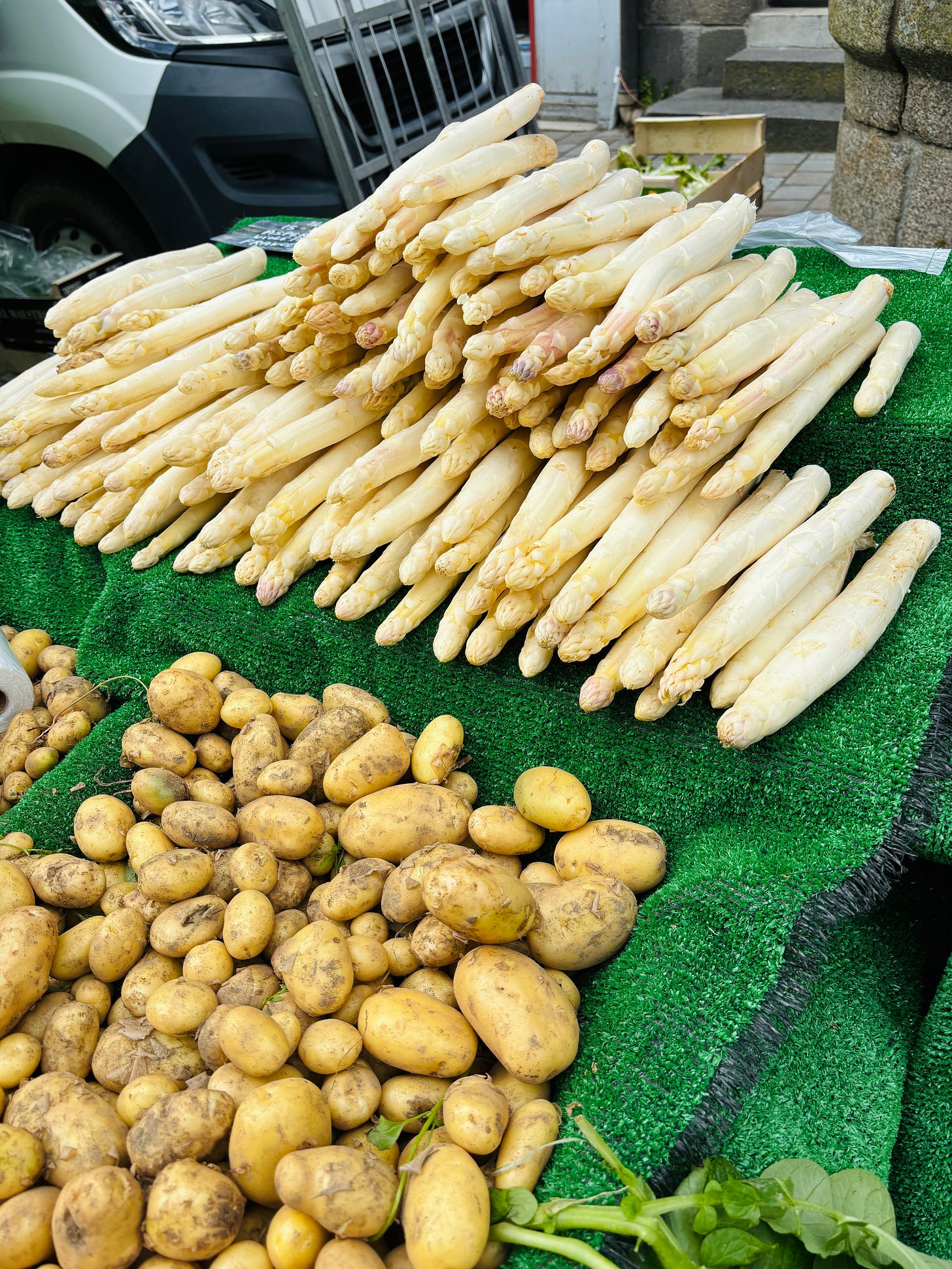
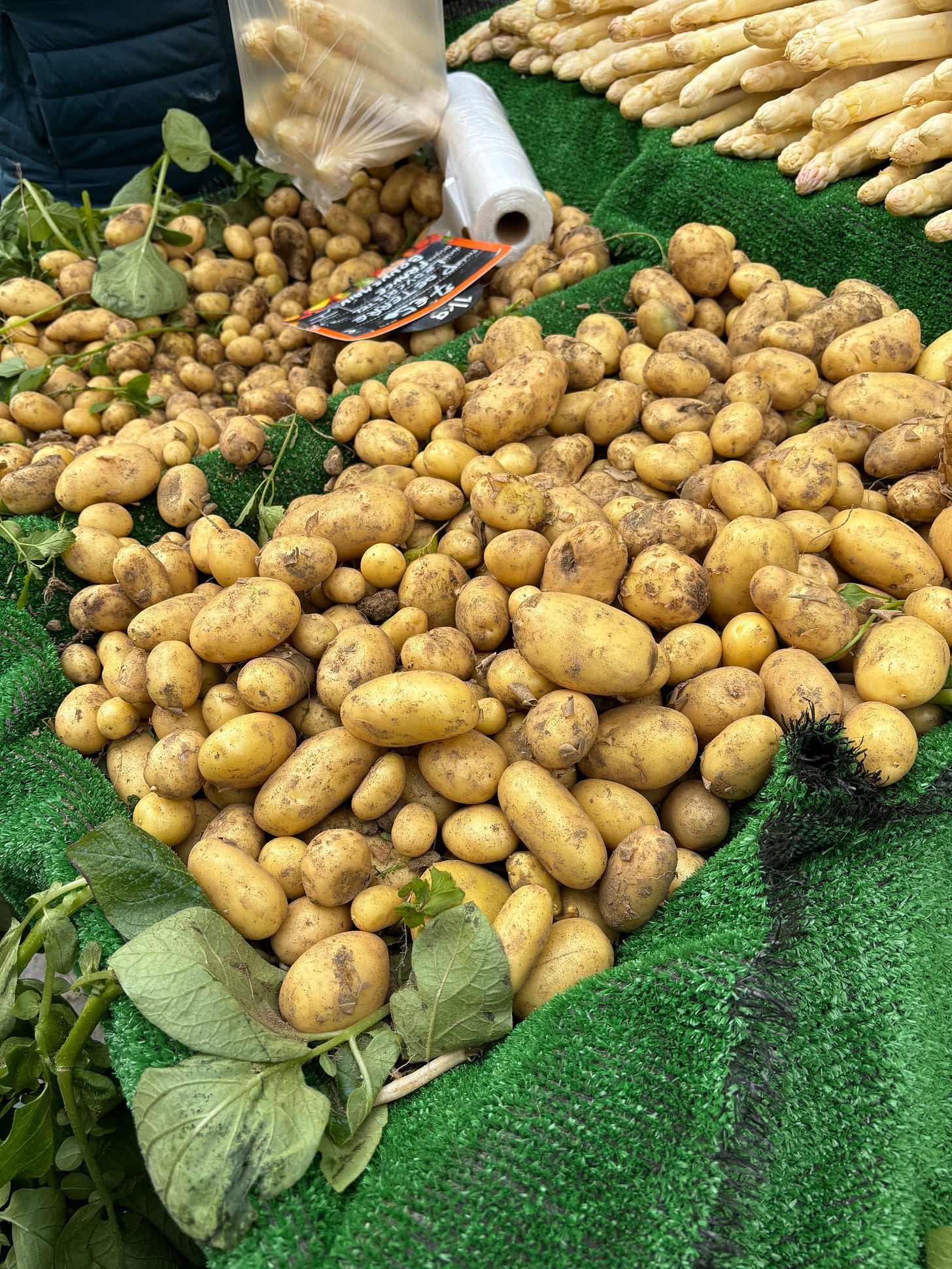
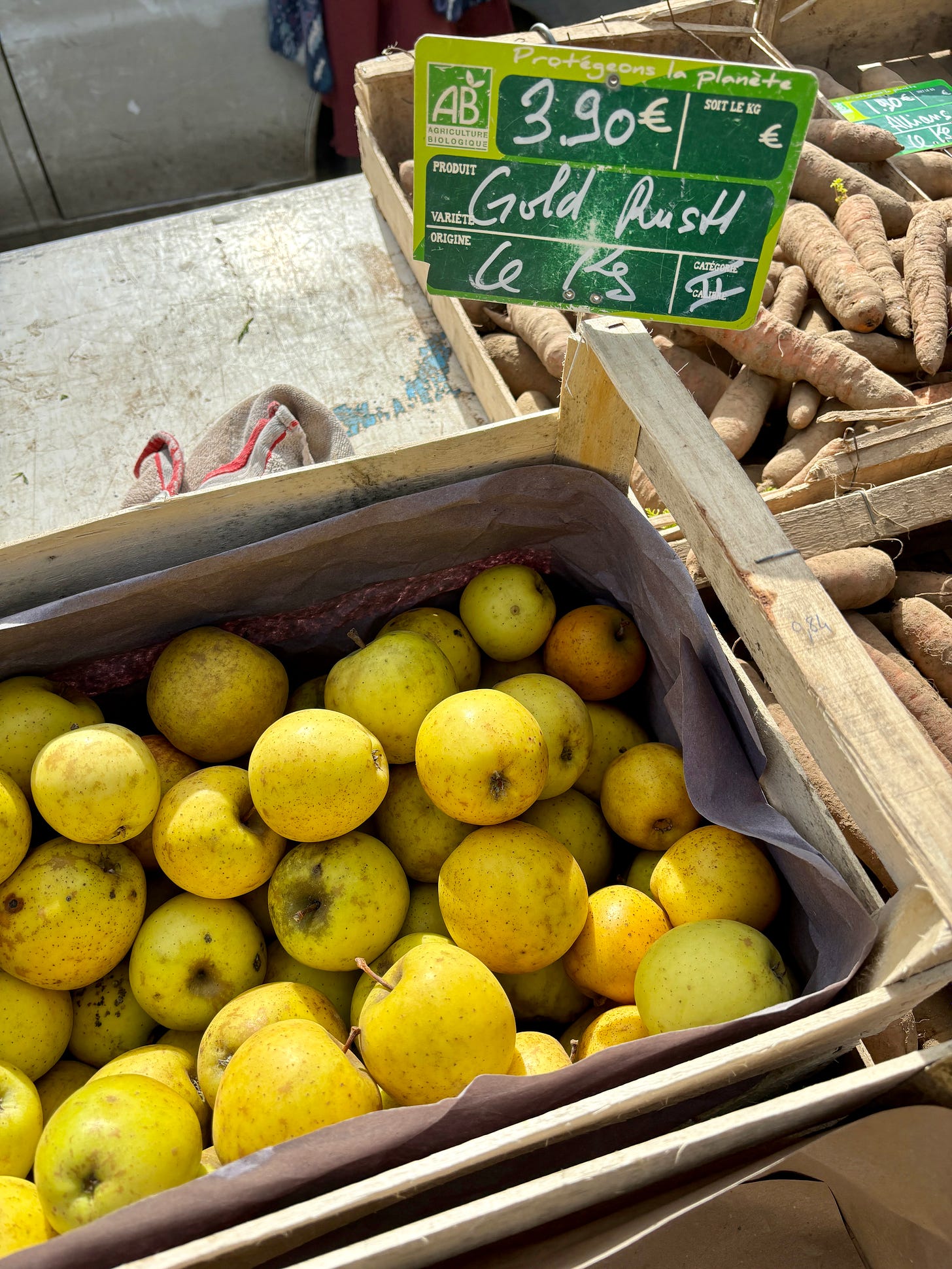
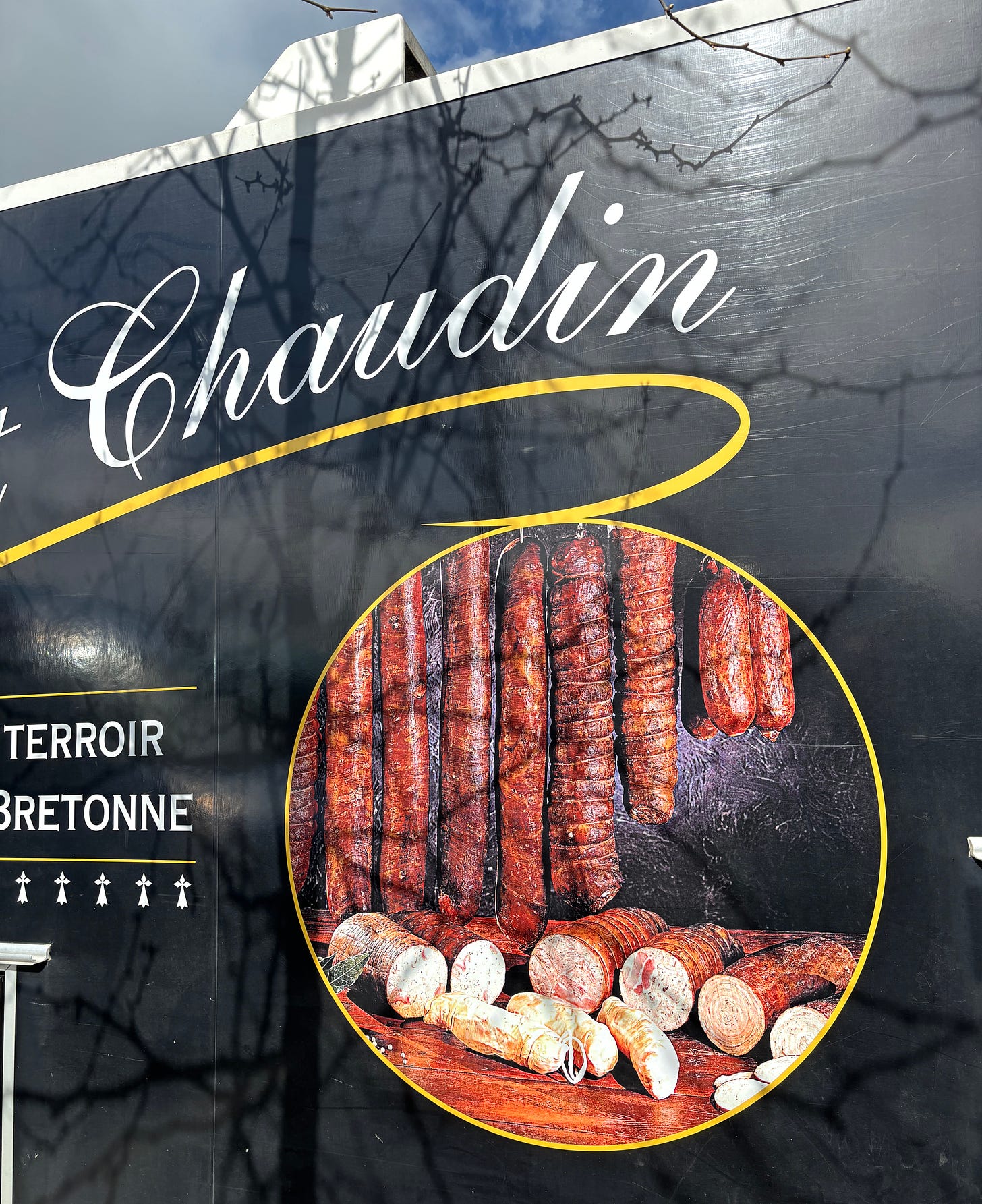
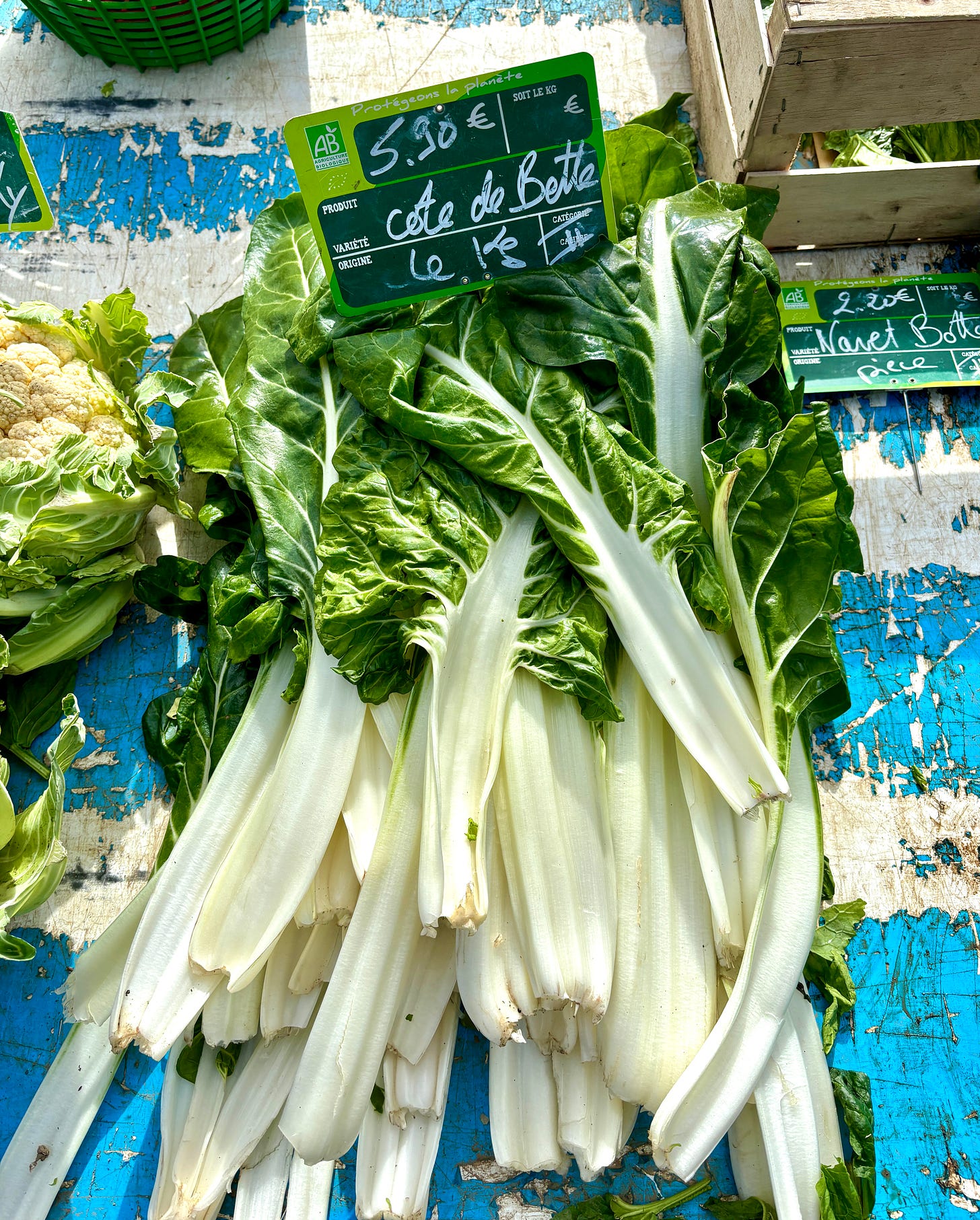

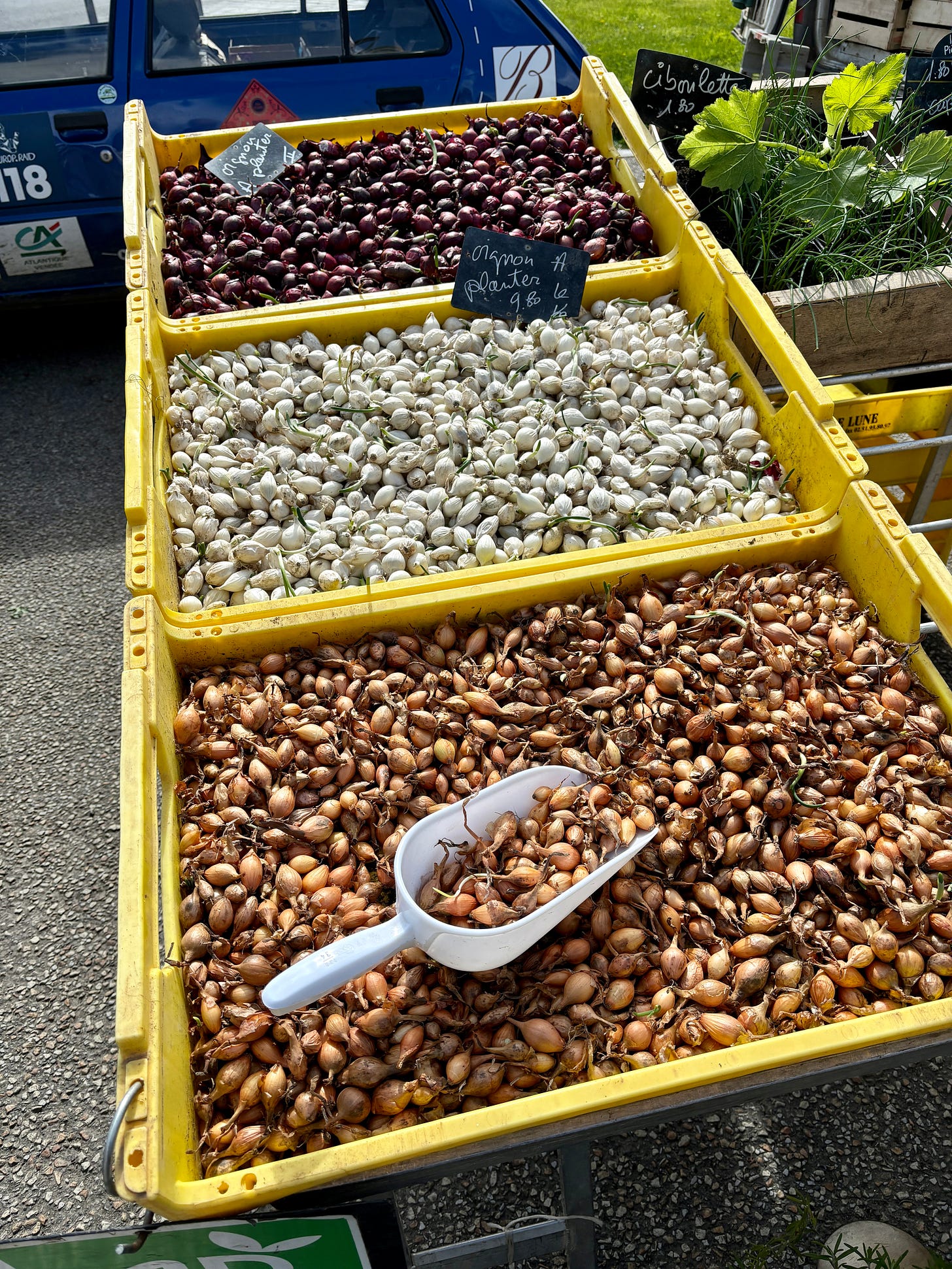
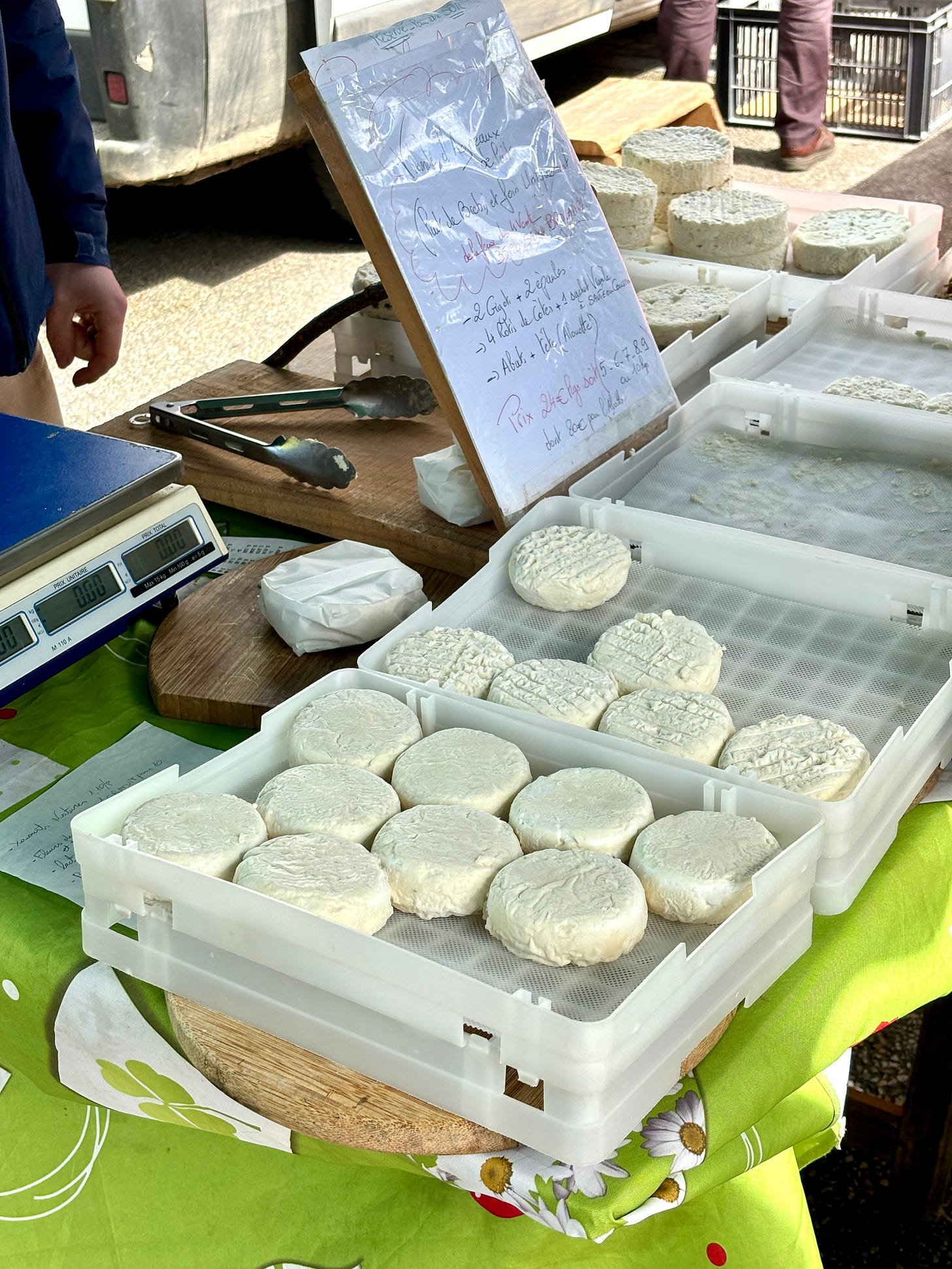

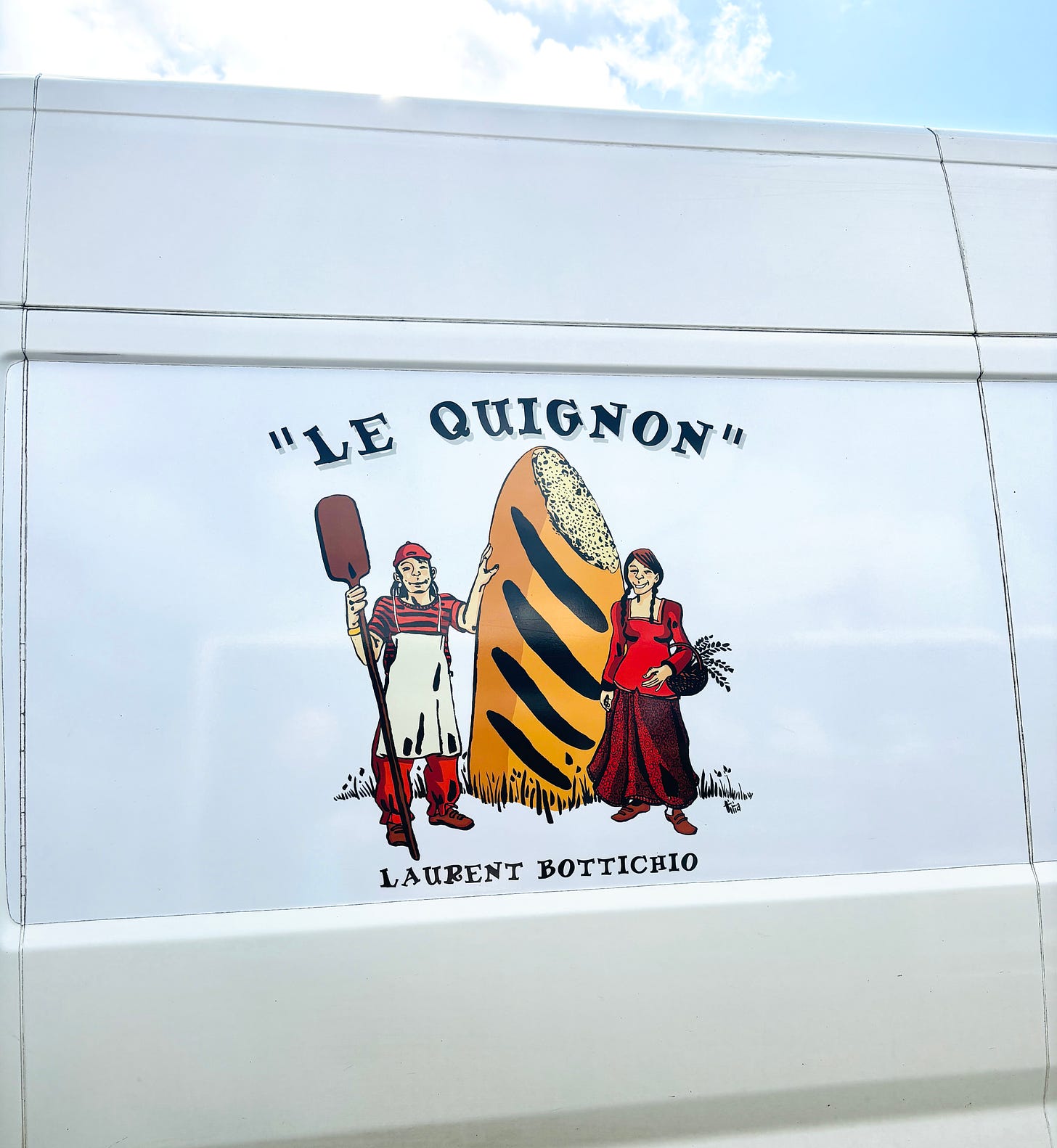
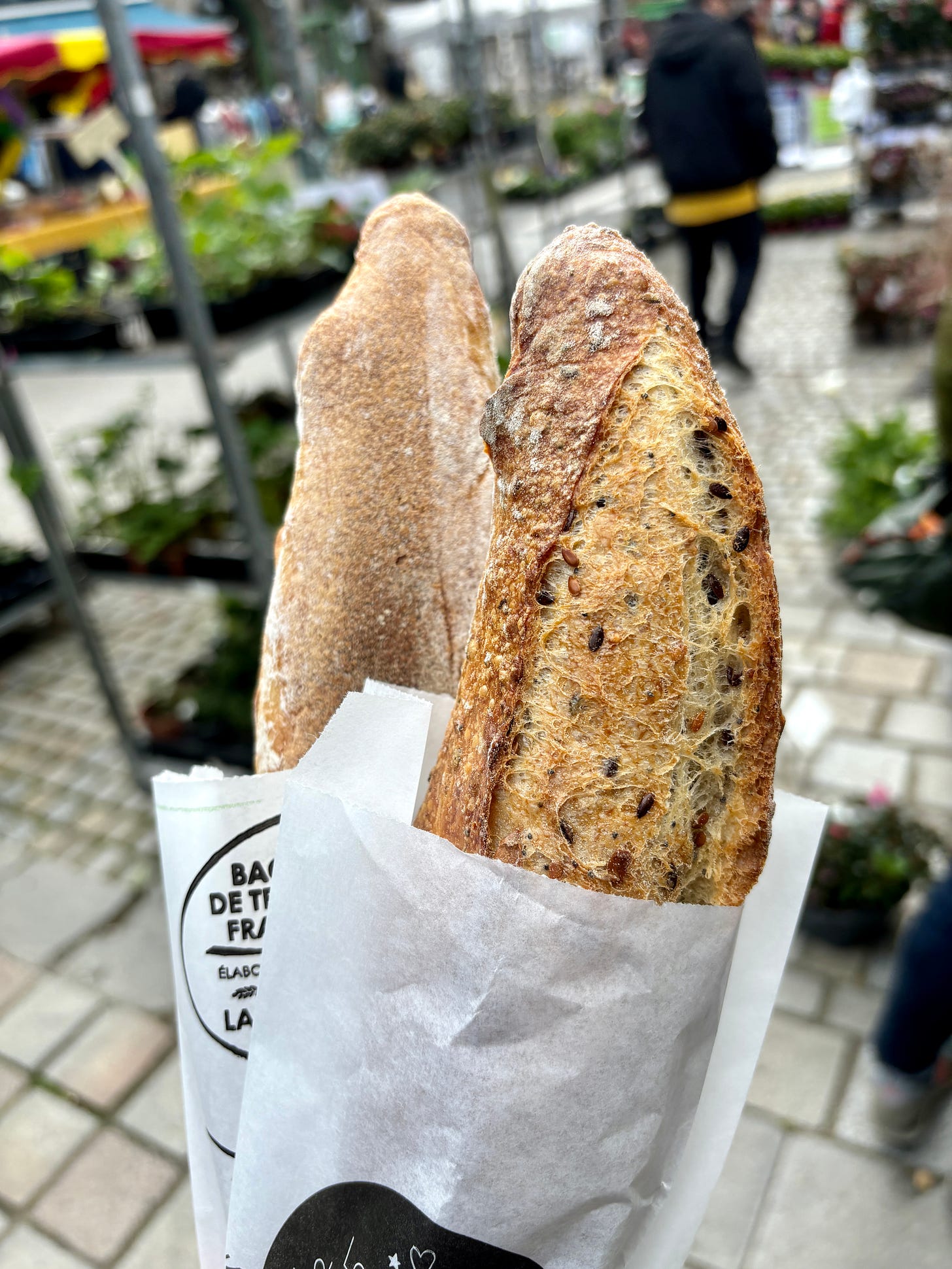
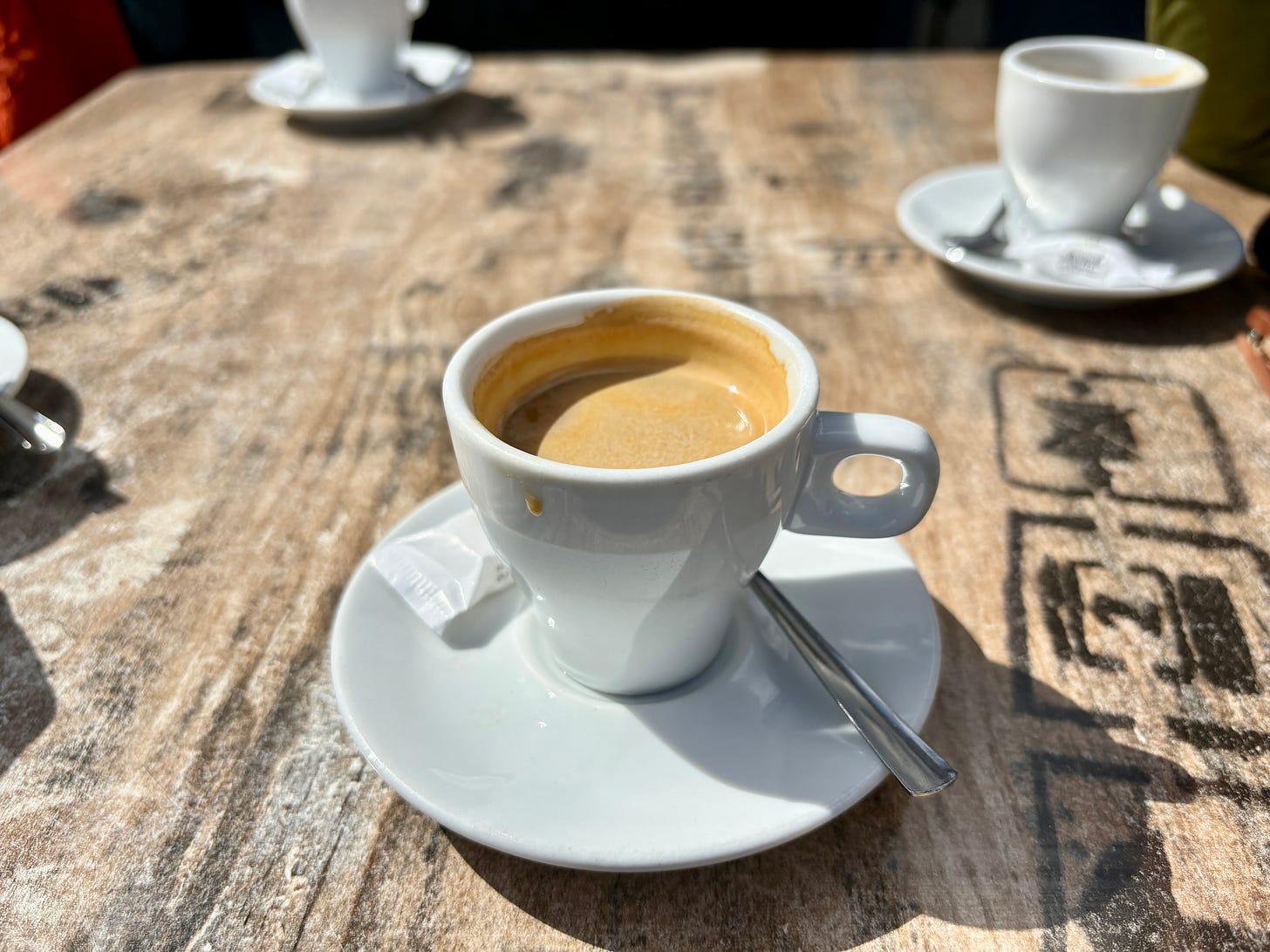

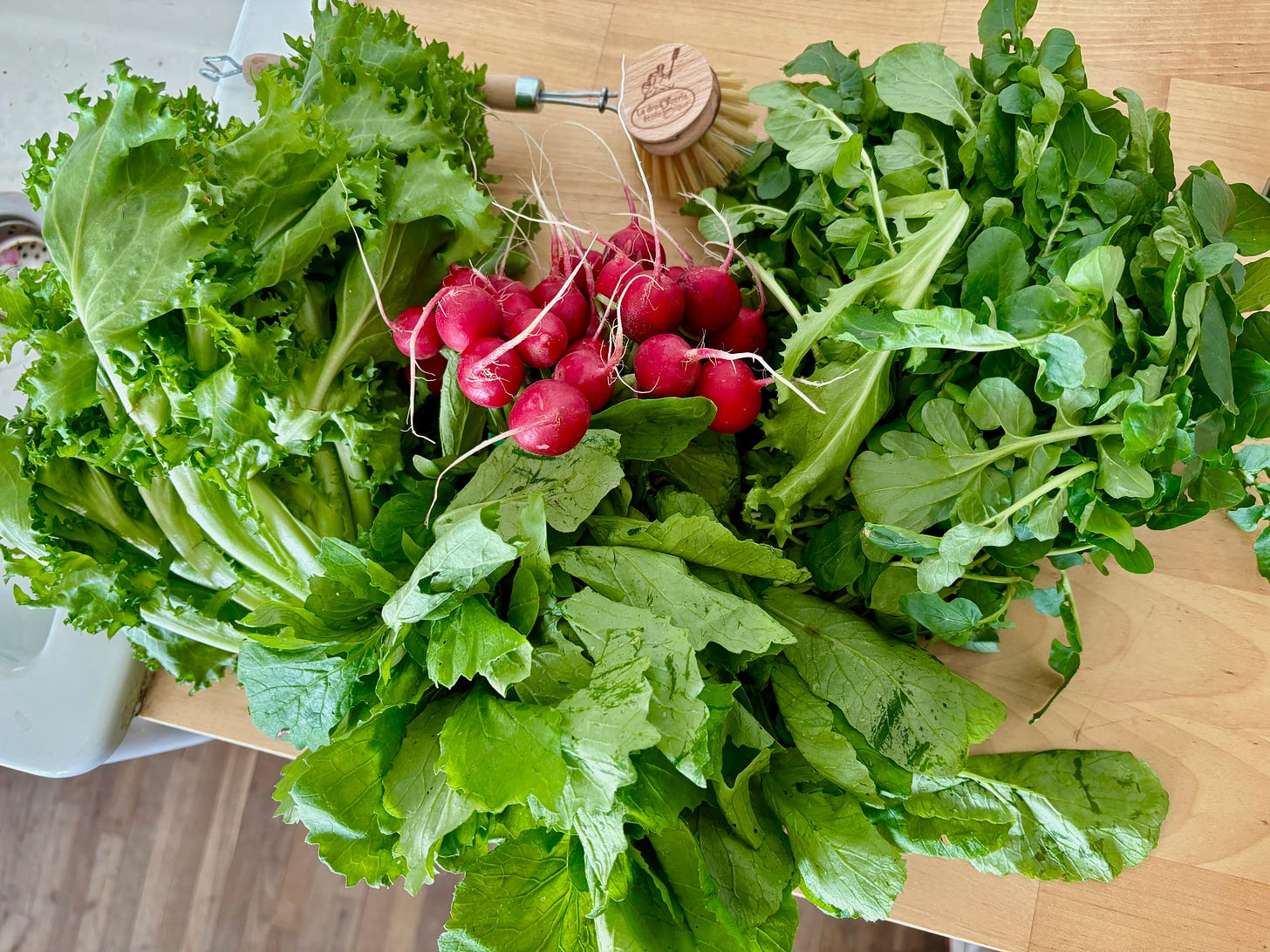
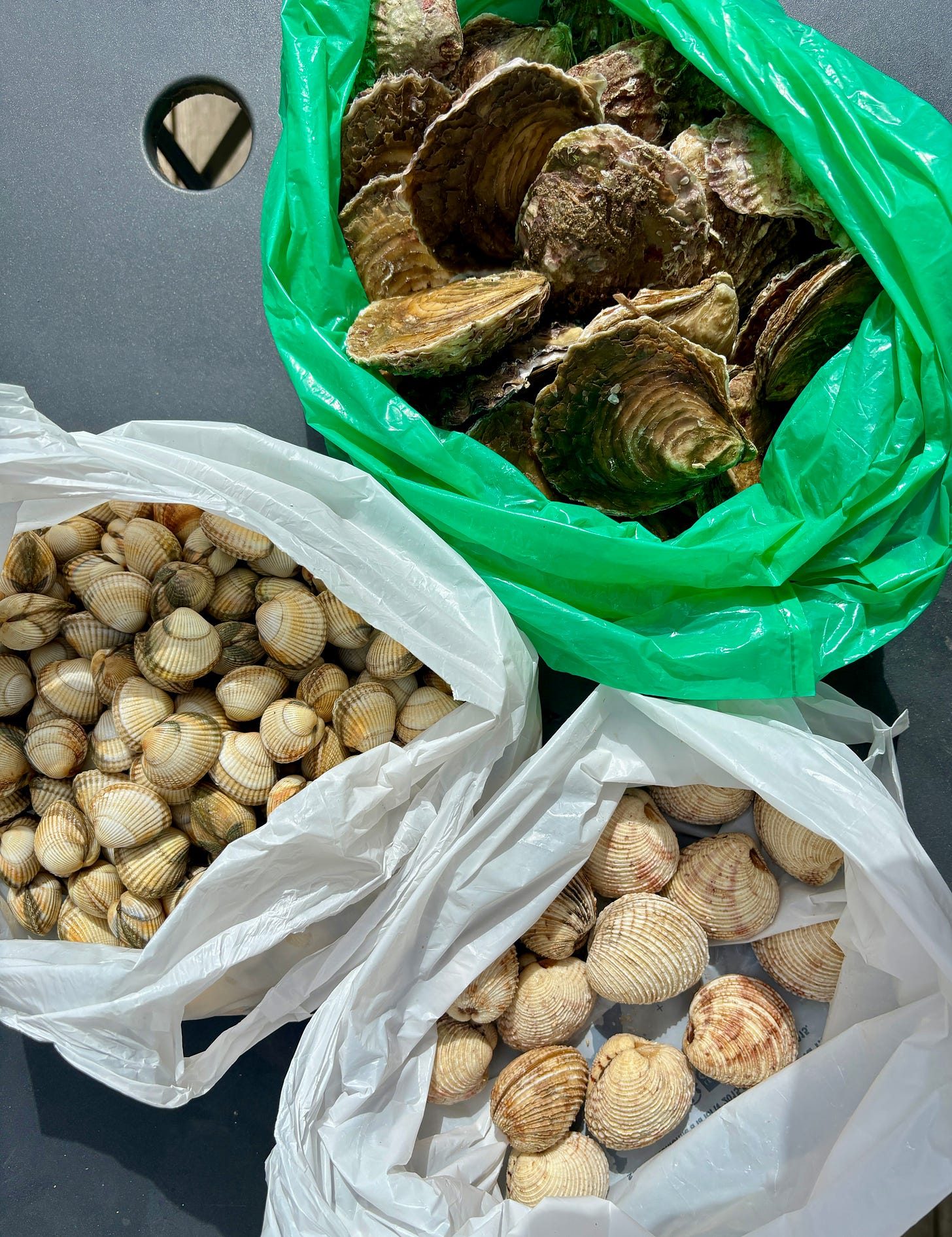
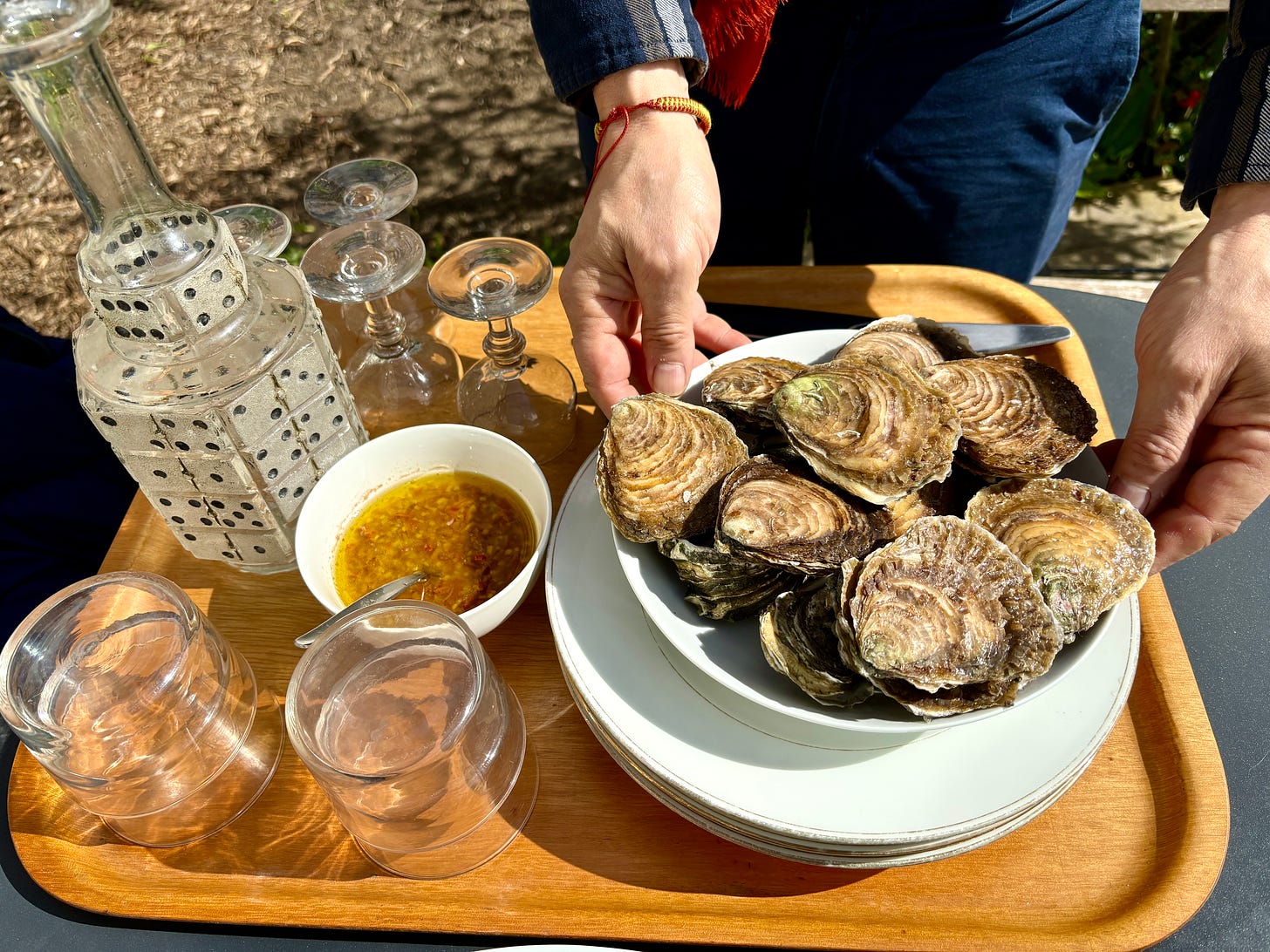
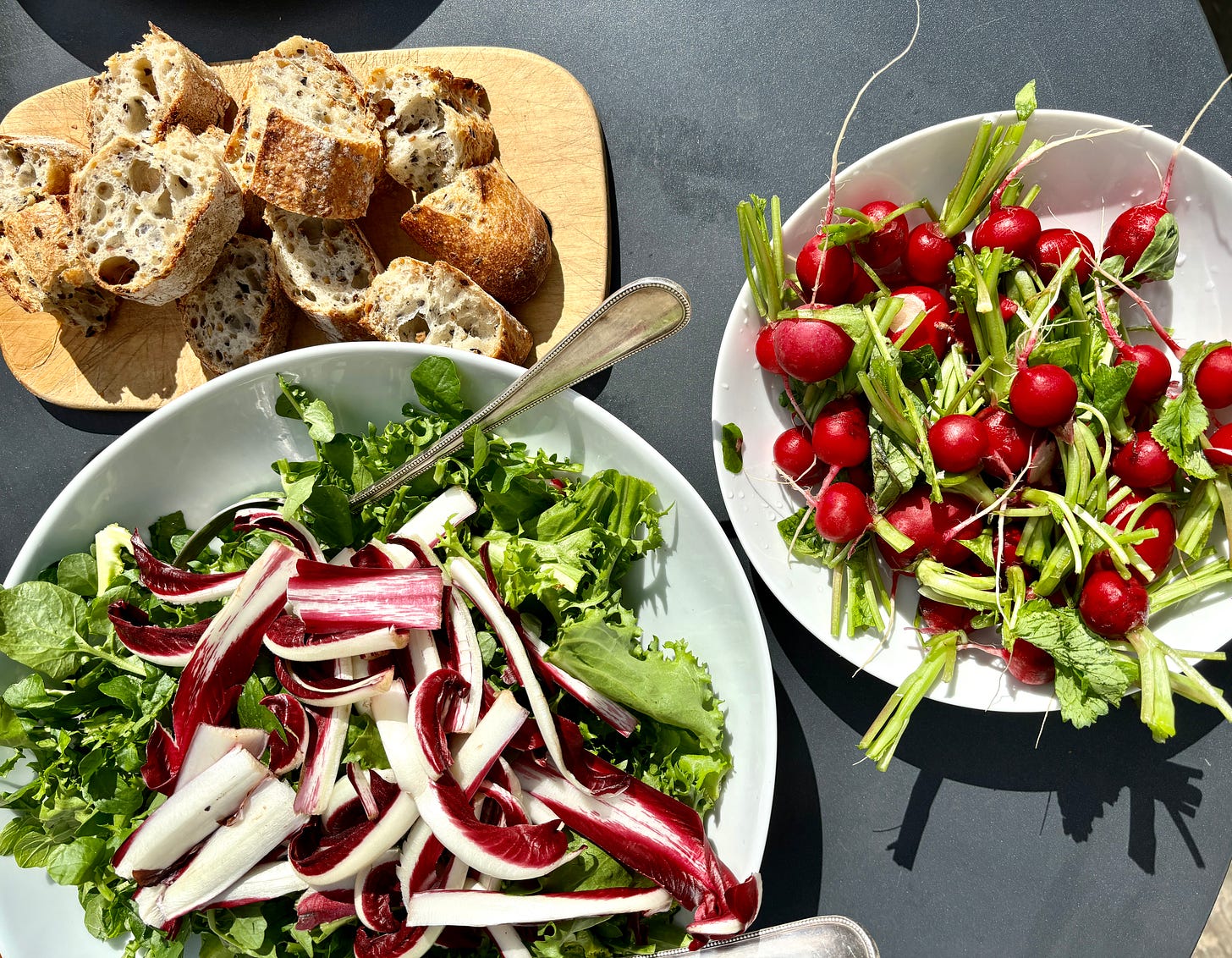
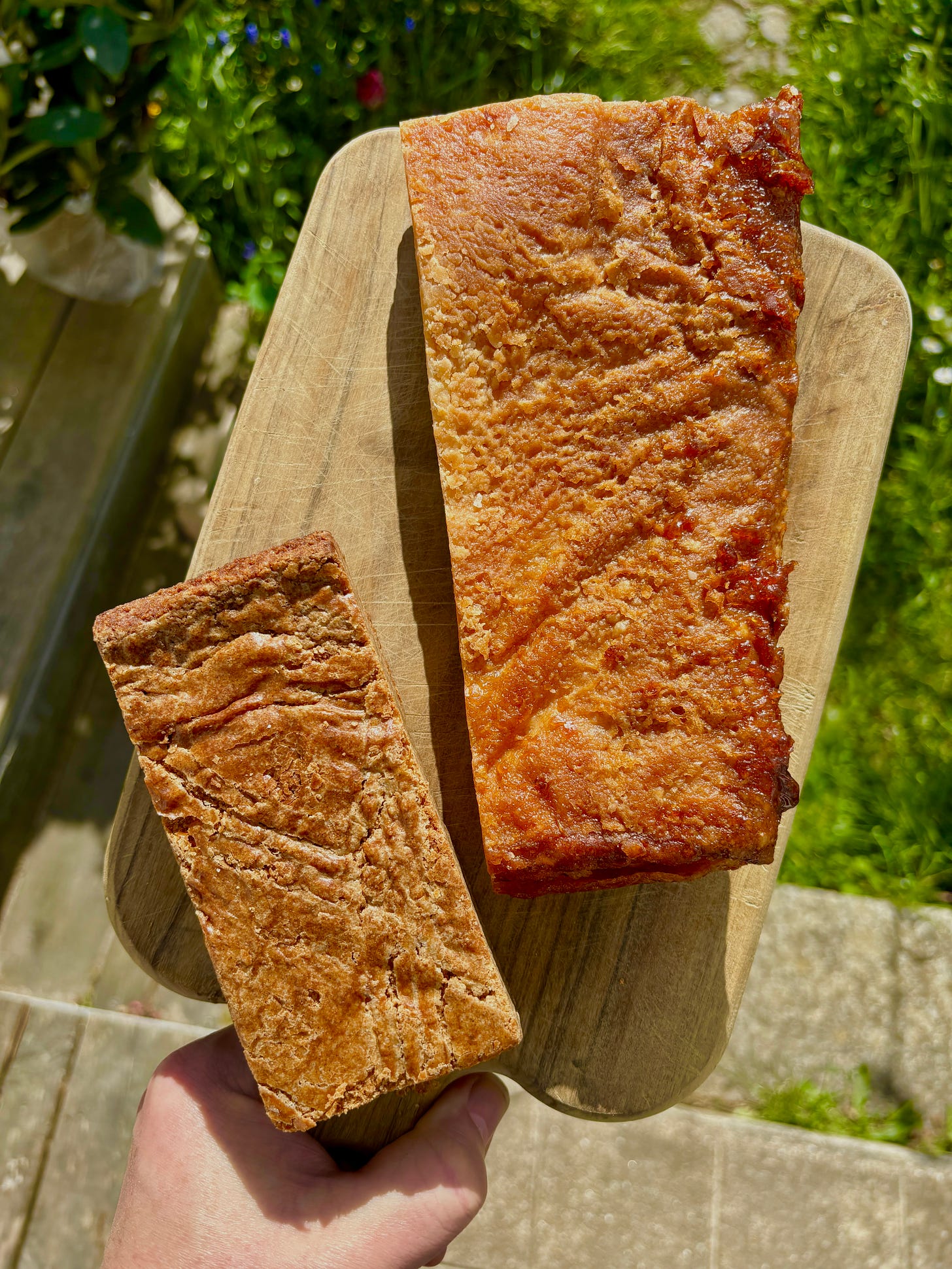

Love your photos, as always. I hope you got some of those Gold Rush apples! They are amazing and not easy to find.
My French husband has lived in Lyon for most of his life and he does indeed like andouillette. He orders it ON PURPOSE at a bouchon when he has other choices. He also likes to quote famous French politician Edouard Herriot (mayor of Lyon and prime minister of France), who said that "Politics is like andouillette: it must (ca doit) smell a little like shit, but not too much."
Land O Lakes unsalted butter here in the US (small town midwest & also decent size city AL) is $7/lb, so I wouldn’t be complaining about the price of butter at this market.